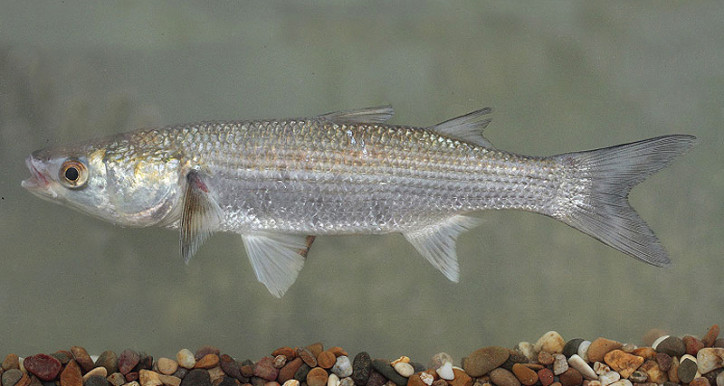Fish of the Chelon genus of the Mugilidae family of the Mugiliformes (Mullets) order of the Acanthopterygii superorder.

(Thinlip grey mullet. Photo © lomadelacebuchal.es)
Thinlip grey mullet (Chelon ramada) was first described in 1827 by the French naturalist Antoine Risso (1777-1845).
The maximum recorded length is 70 cm; specimens up to 35 cm long are more common. The maximum weight is 2.9 kg. This schooling coastal fish often enters brackish lagoons, likes fresh water and swims upstream to the rivers. Adult individuals prefer to swim at the depths of more than 10 meters. It feeds on algae, detritus, small benthic and planktonic organisms.

(Thinlip grey mullet. Photo © ibss.iuf.net)
It is a permanent inhabitant of the Adriatic Sea.
Names of thinlip grey mullet (Chelon ramada) in other languages are as follows:
Qefulli i vjeshtës (Albanian), Тънкоуст кефал (Tinkoust kefal) (Bulgarian), Dunlipharder (Dutch), Μαυράκι (Mavraki) (Greek), Kifon matzui (Hebrew), Morragute (Spanish), Cefalo calamita (Italian), Dünnlippige Meeräsche (German), Cefal cienkowargi (Polish), Tainha-fataça (Portuguese), Platarin (Romanian), Кефаль-рамада (Kefalj-ramada) (Russian), Cipol balavac, Cipal balavac (Serbian, Croatian), Tenkousti cipelj (Slovenian), Ciran balığı (Turkish), Mulet porc (French), Cípal evropský (Czech).